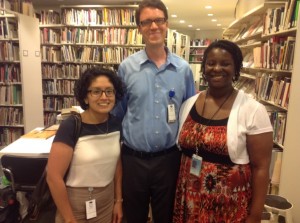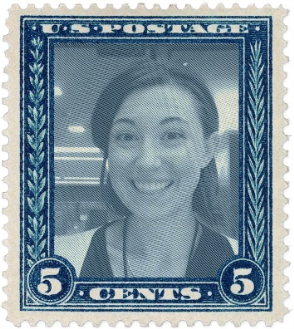
Please join us for this free film showing and lecture!
This event is free and open to the public. If you plan to attend, please RSVP via email to SILRSVP@si.edu.

Please join us for this free film showing and lecture!
This event is free and open to the public. If you plan to attend, please RSVP via email to SILRSVP@si.edu.

This post is written by Helen James, Curator-in-Charge, Division of Birds, National Museum of Natural History. Ask Helen a question during our Twitterchat on Tuesday, September 2nd!
Martha, the last passenger pigeon, is back on public display for the first time since 1999, this time in an exhibition titled Once There Were Billions: Vanished Birds of North America that opened in the Smithsonian Libraries Exhibition Gallery of the National Museum of Natural History on June 24. Martha died on September 1, 1914, in the Cincinnati Zoo; she was immediately frozen into a 300-pound block of ice and shipped by fast train to the Smithsonian in Washington. There her body was carefully preserved as a taxidermy mount and an anatomical specimen. She had been recognized in the last years of her life as the only surviving individual of a species that was the most abundant bird in North America only decades earlier. In death, she has become one of the Smithsonian’s most treasured specimens. Martha’s story was a wake-up call for our nation regarding its unregulated harvesting of natural resources and contributed to the development of our modern conservation ethic and laws protecting wildlife.
Please join the Smithsonian Libraries, the National Museum of Natural History (NMNH) and the Biodiversity Heritage Library (BHL) for a twitterchat on September 2nd. The chat will take place between 2-3 pm (EST) and feature Helen James, Curator of Birds and our recent Once There Were Billions exhibit in NMNH, and Martin Kalfatovic, Program Director of the Biodiversity Heritage Library.

This post was written by Salima Appiah-Duffell, library technician at the Smithsonian American Art Museum/National Portrait Gallery Library and Hirshhorn Museum and Sculpture Gallery Library. Salima recently joined our staff in July. Welcome, Salima!
When I started library school at Catholic University, working at the Smithsonian (Institution) seemed like a beautiful, but impossible dream. Now, with my Master’s in hand, I’ve started my second career exactly where I hoped. I’ve been a Library Technician for the Hirshhorn Museum and Sculpture Garden and Smithsonian American Art Museum/National Portrait Gallery Libraries for a month now, and I still can’t believe my luck.

This post was written by Grace Costantino, Outreach and Communication Manager for the Biodiversity Heritage Library. It first appeared on the BHL blog here.
You are living in the midst of earth’s sixth great extinction event. You’ve been living in it since you were born. So have your parents, your grandparents, your great-great-great-great-grandparents, and all of your ancestors for about 10,000 years. It dates back to the extinction of the mammoths and has been increasingly accelerating as human actions and climate change reshape the balance of our planet. Within the next century, 75% of the conservatively estimated 8.75 million species on earth may be extinct.
 This post was written by Kelly Baxter, Advancement Intern.
This post was written by Kelly Baxter, Advancement Intern.
Like so many, I have always been very fond of libraries. I’ve tried to live by the motto that “one should live and work in places where there are books strewn about” and I’ve fared pretty well on that front so far. Yet despite my lifelong affinity for all things bookish, others are generally surprised to discover that I am currently channeling the knowledge I am picking up in library science graduate school into exploring library fundraising and advancement. The Smithsonian Libraries were not surprised, however, and awarded me a professional development internship with their Advancement Office for six weeks this summer to learn more about their gift-in-kind program.